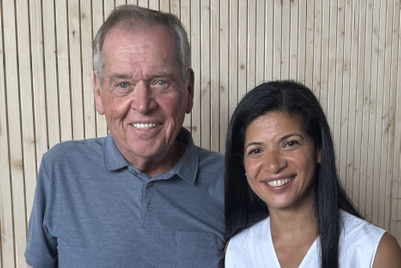
1 The three bills allow the Government to privatise its media properties - three broadcast TV networks and the Yonhap cable news channel and agency. They also ease cross-media ownership. Newspapers and chaebol commercial conglomerates will be able to own stakes in broadcasting stations for the first time. They will be entitled to buy 10 and 30 per cent stakes in national TV and cable news networks, respectively; papers with a readership of over 20 per cent of the market are prevented from investing. The Government has stated that the motion is designed to dismantle silos and stimulate competition and a free flow of information.
2 The bills have been fiercely contested by Korea’s Democratic Party and liberal minority opposition parties, which argue that the right-wing Government is covertly seeking greater control over the media. While the Government has not announced plans to sell any of its broadcast networks, purchase by a partisan newspaper - one of the ‘big three’ of Chosun Ilbo, JoongAng Ilbo and Dong-A Ilbo - could lead to a more conservative media.
“Opponents want the Government to keep a stake in the media,” says Mike Breen, president of Seoul-based PR firm Insight Communications. “Print is dominated by the conservative press. TV is more liberal and sensationalist. The fear is that it will all change.”
Jay Paik, president of Diamond Ogilvy, says the market’s three TV stations fear an increase in competition from outside players, which can now enter the field with fewer restrictions. All major channels called a strike following the passing of the legislation.
3The real implication for the media industry, claims Paik, is the possibility that cross-media ownership could be a “breakthrough [in developing] a more profitable business model” for media companies in a weak financial situation.
According to Steve Yi, chief strategy officer at Grey Korea, the move has been on the cards for some time. “It’s likely that the newspapers did a lot of lobbying to make this happen,” he says, adding that no paper will be exempt from participating since none has a readership as high as 20 per cent. He sees the leading papers as moving almost as a single business entity, and predicts that TV may come to be managed “like a media consortium rather than as independent channels”. Yi says this is likely to have a negative impact on non-Government-owned channels such as MBC and SBS. But, describing the legislation as primarily “pro-newspaper”, he says the market is unlikely to see more cross-media deals outside expansion by the ‘big three’.
4 Breen indicates that TV rates in particular are likely to become more competitive, although Kobaco, the domestic broadcast advertising regulatory body, will continue to control commercial distribution as before.
Meanwhile, a spokesperson from Cheil Worldwide’s Media Design Team says that, despite the chance of an initial consolidation resulting in fewer, more powerful media owners, advertisers could later find themselves dealing with “more media owners than they do now”, as new platforms such as cable channels enter the market.
5 Whether the development will be positive or negative in the long term remains a matter of contention. Paik is adamant that it is “good news”, with media diversification and volume growth leading to “more stable profits” for media operators. “We anticipate fast and substantial growth in media as we expect less regulation [in terms of ad slots, product placement and e-commerce via digital TV]. This will lead to an era of free competition in the industry.”
Yi is less optimistic. “It rewards big money, not necessarily performance and ability,” he says. “The ‘big three’ represent old money and have strong ties to business conglomerates. It’s almost as if Korea is becoming a corporation-led nation out of a dystopian science fiction novel.”
What it means for…
Broadcasters
- Competition is likely to increase since newspapers have the green light to establish their own broadcast operations.
- There will be increased integration of communications; this may help Korean media companies compete more effectively on a global level.
Advertisers
- TV rates are likely to become more competitive if the market is opened up to new entrants.
- Package-buying regulations will probably remain in place, but there will be an easing of restrictions elsewhere.
- There will potentially be a wider range of media owners to deal with, though more media owners will be able to offer cross-platform deals.
Got a view?
Email [email protected]
This article was originally published in 13 August 2009 issue of Media.


.jpg&h=334&w=500&q=100&v=20250320&c=1)


.png&h=334&w=500&q=100&v=20250320&c=1)





.png&h=334&w=500&q=100&v=20250320&c=1)
.png&h=268&w=401&q=100&v=20250320&c=1)


